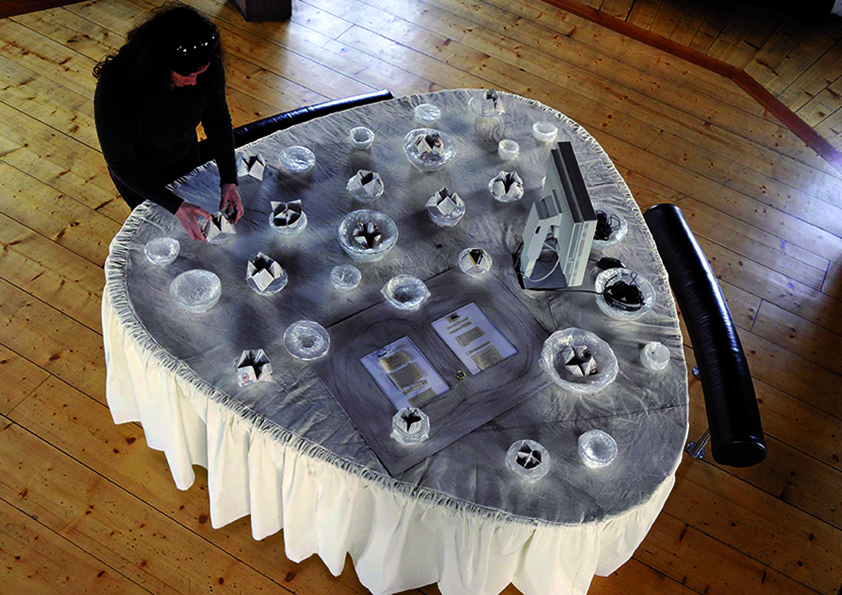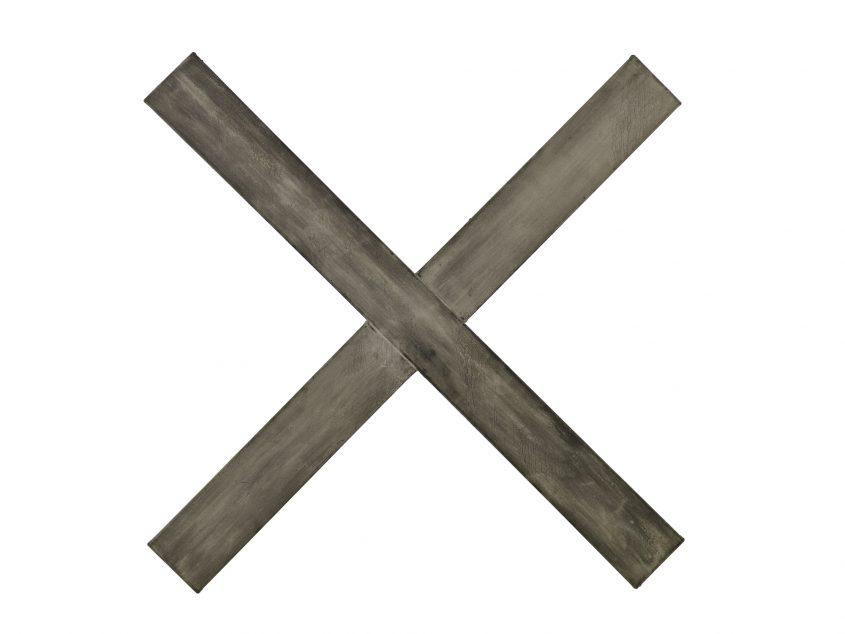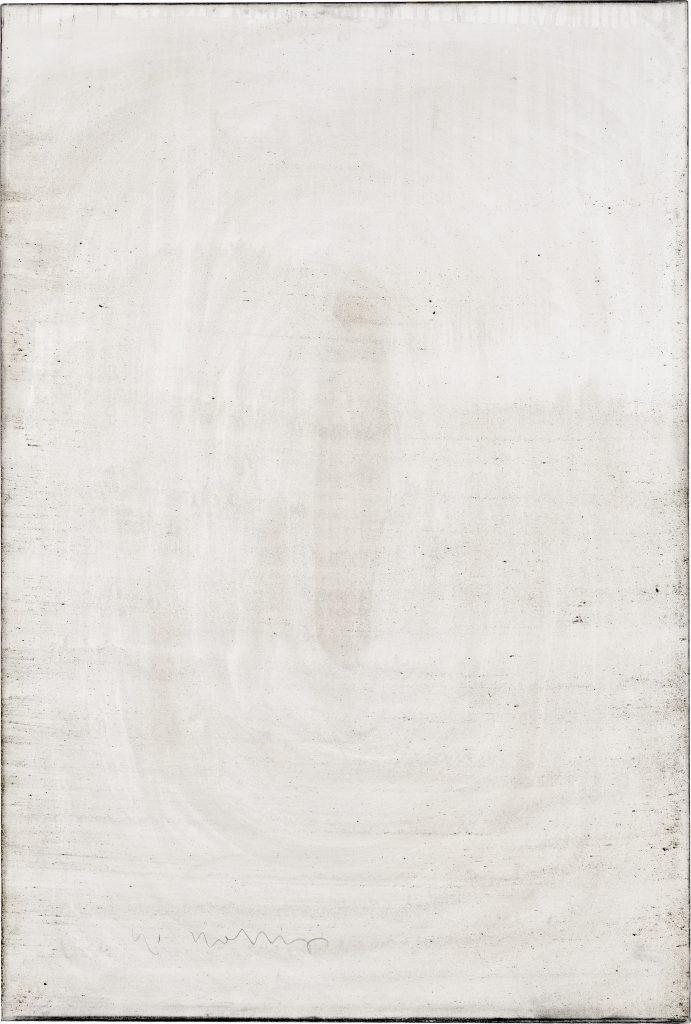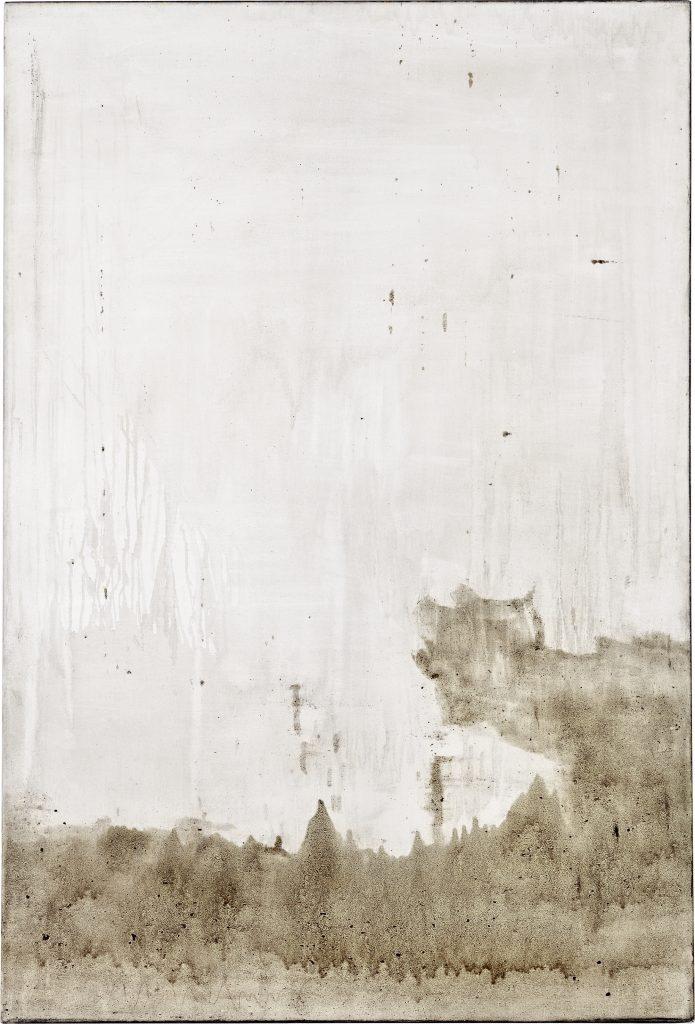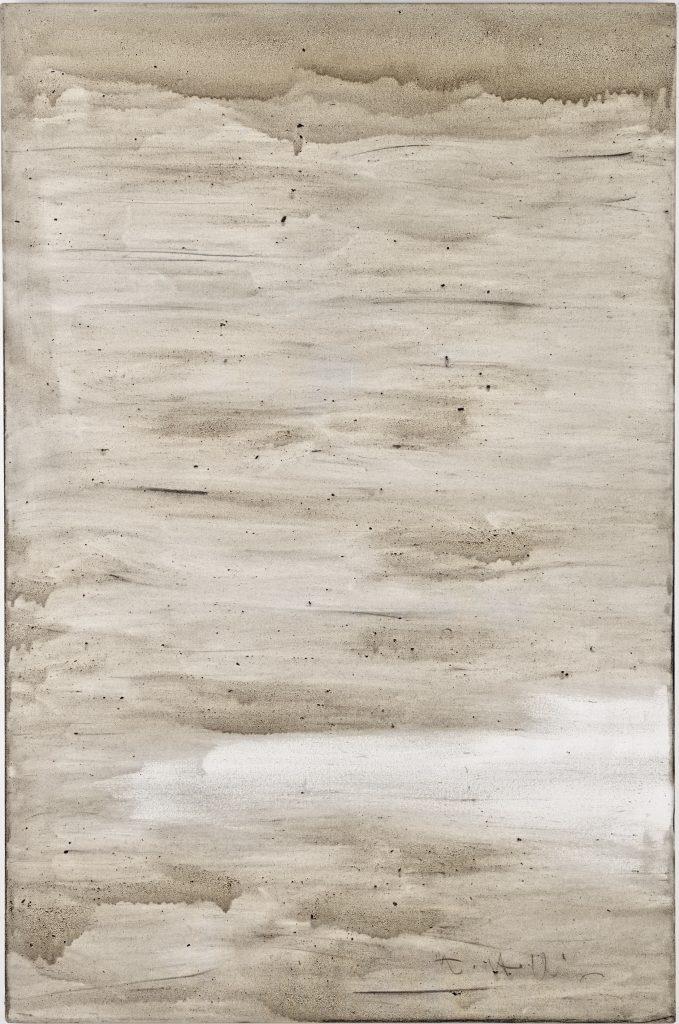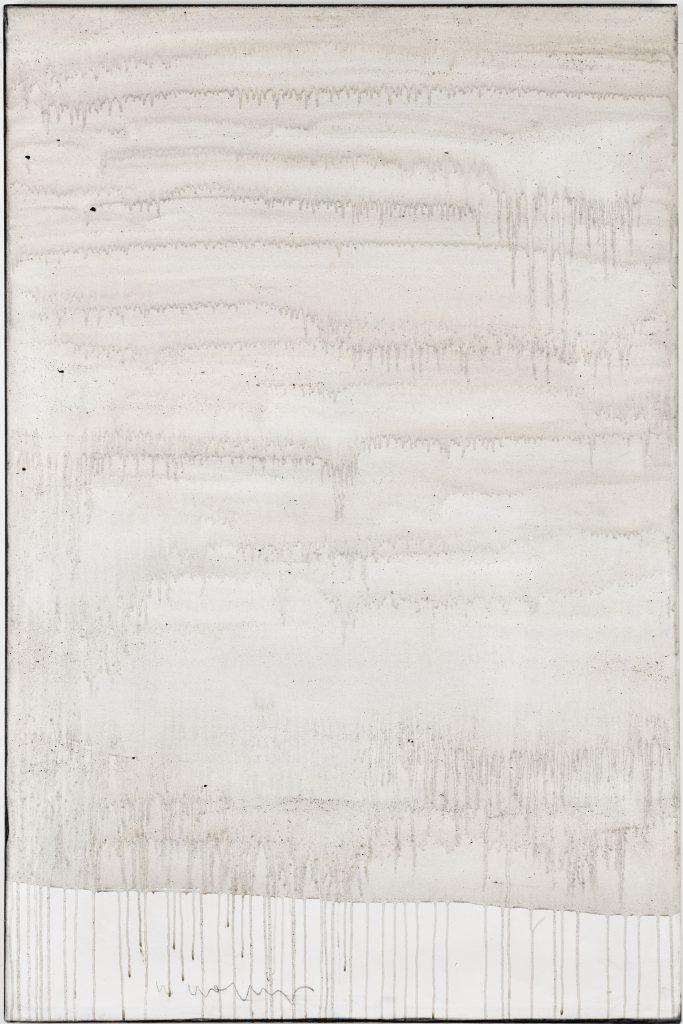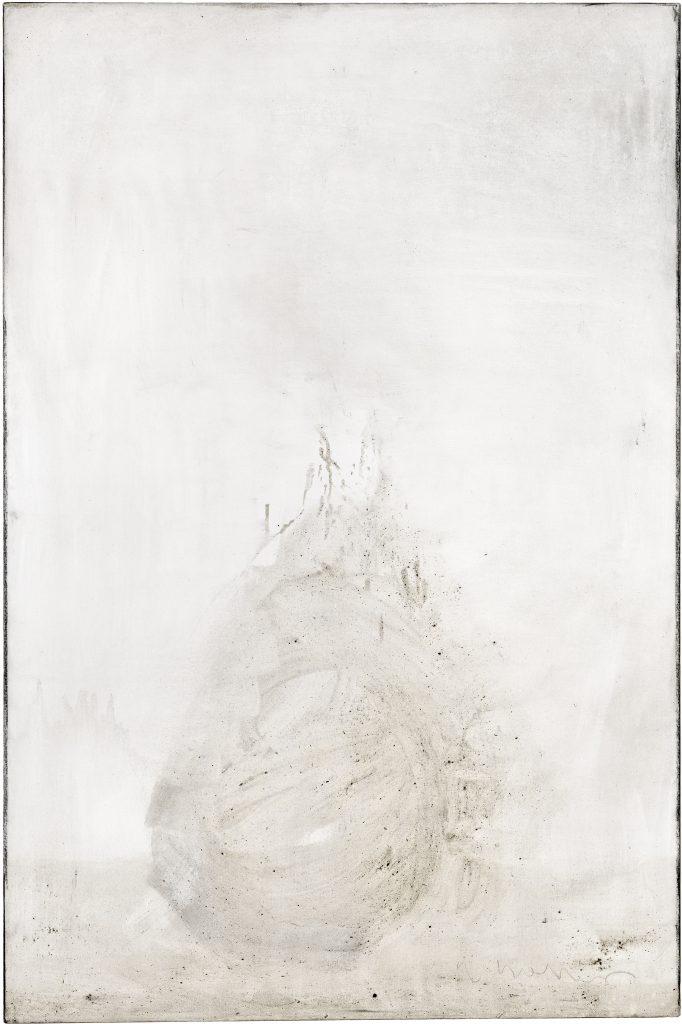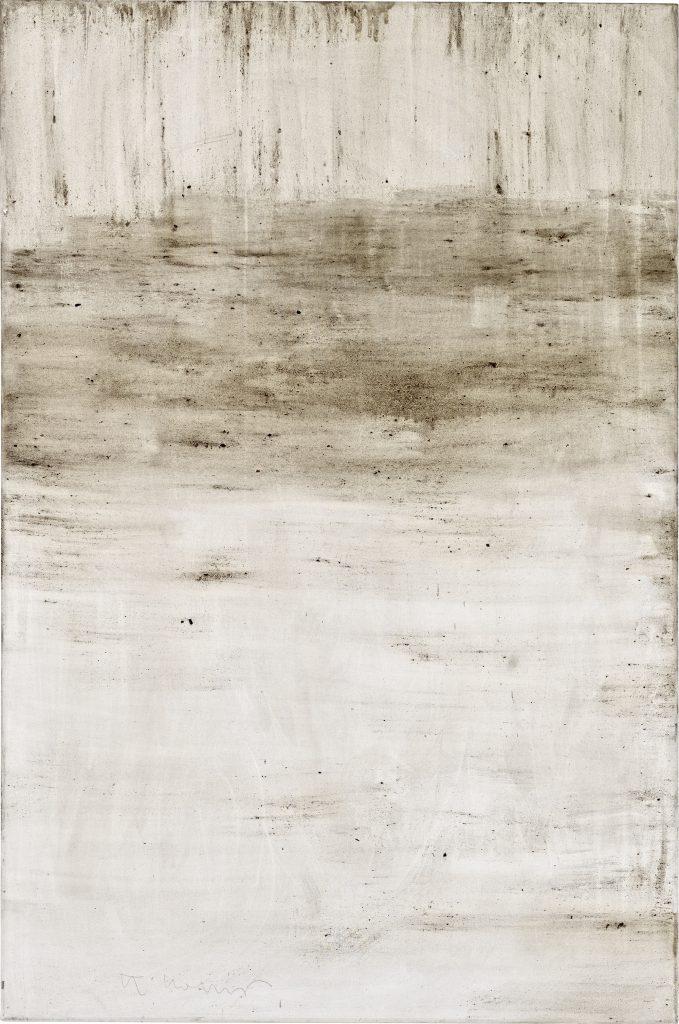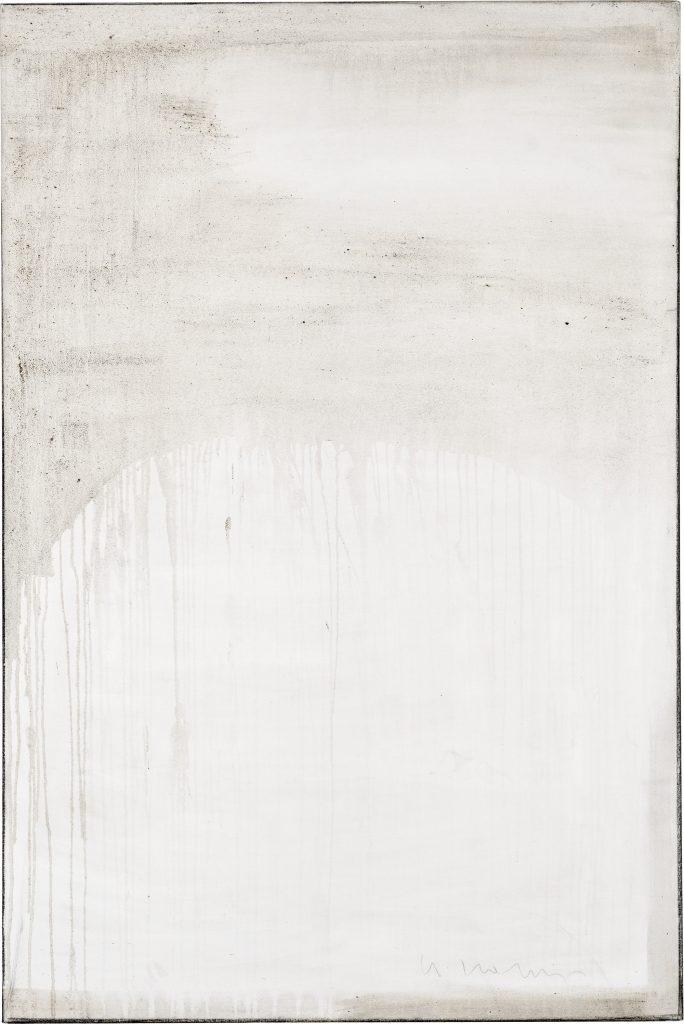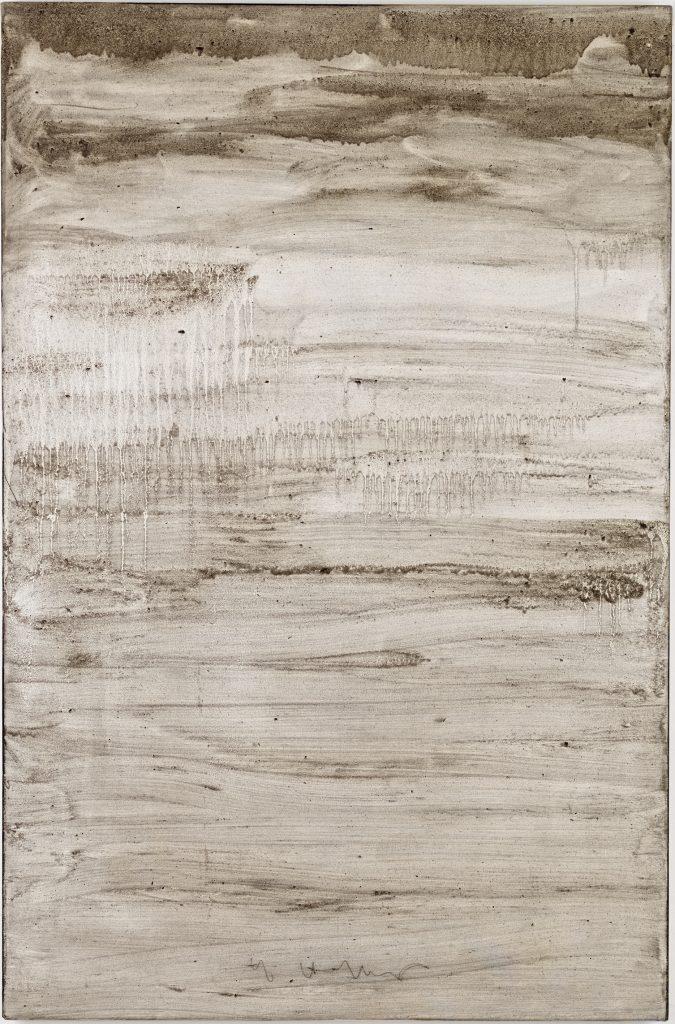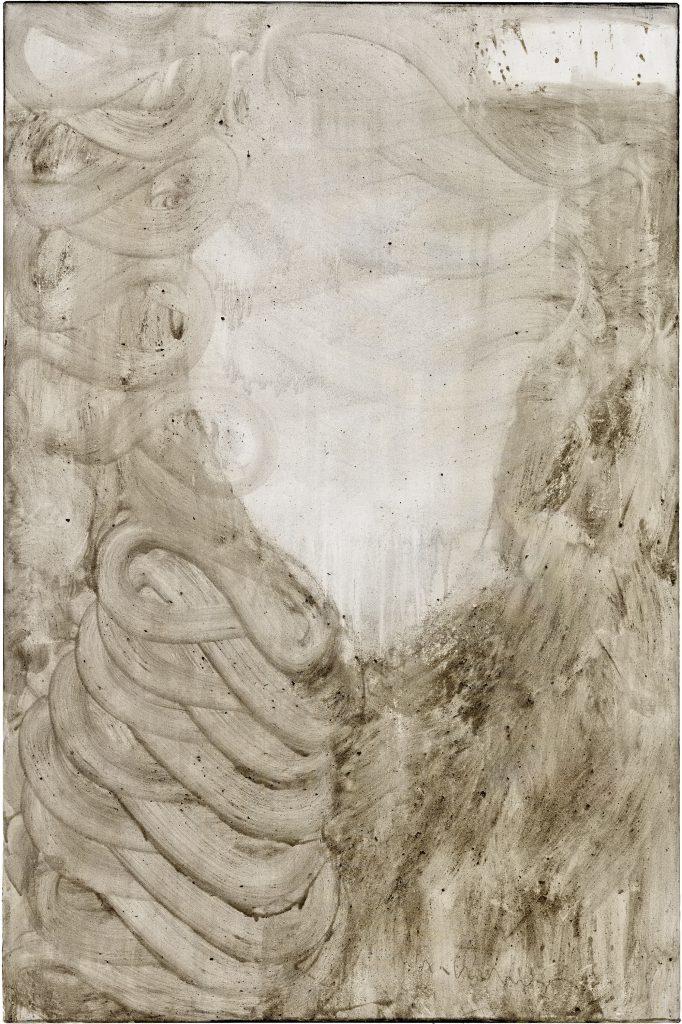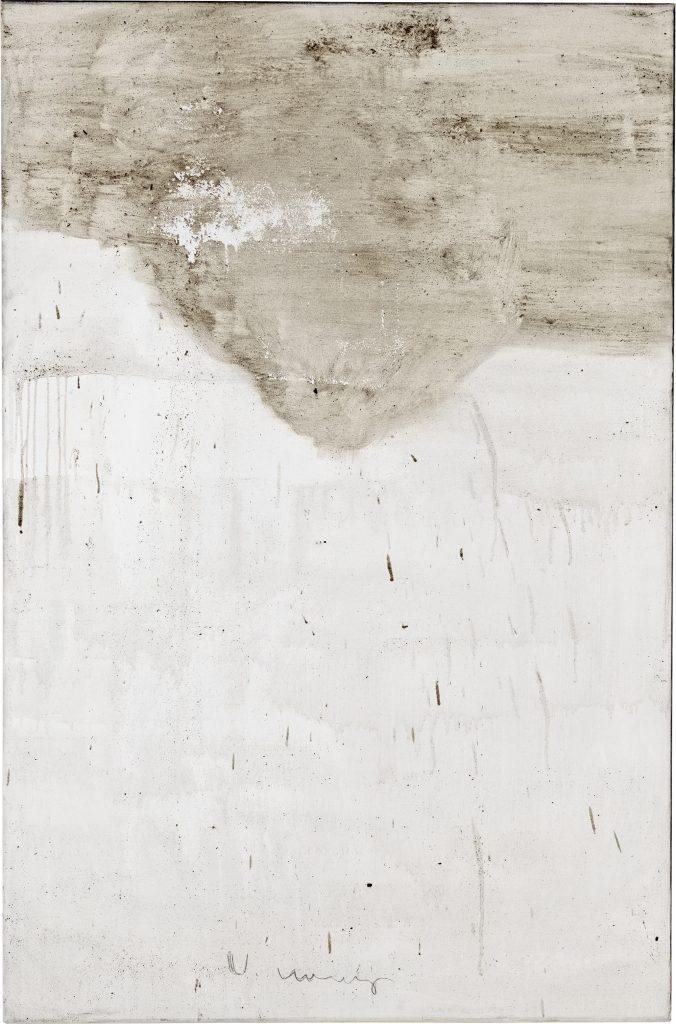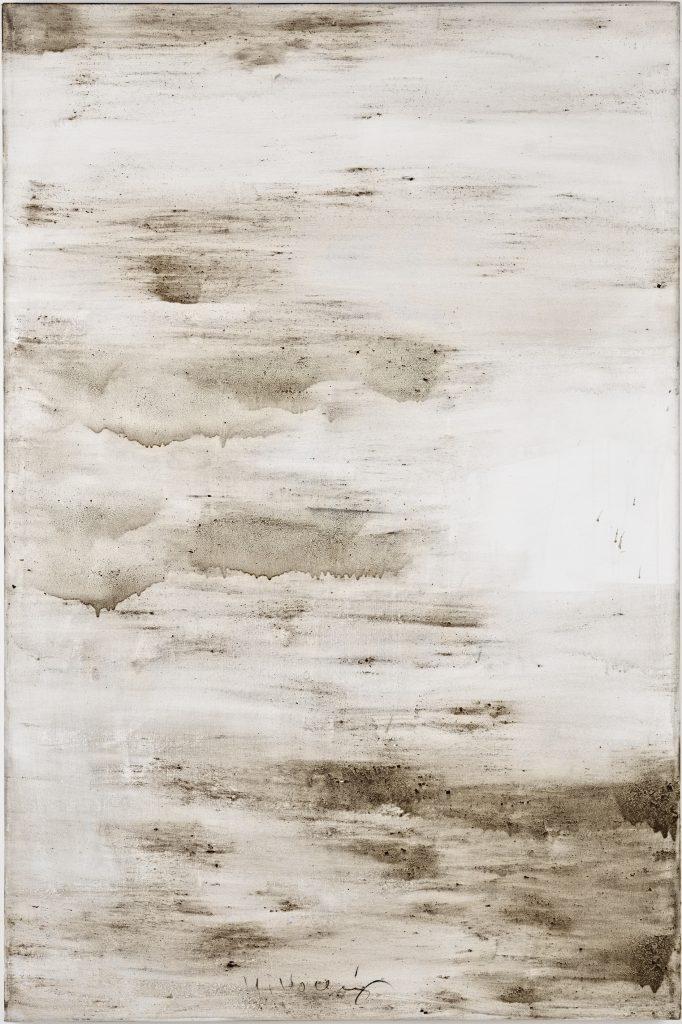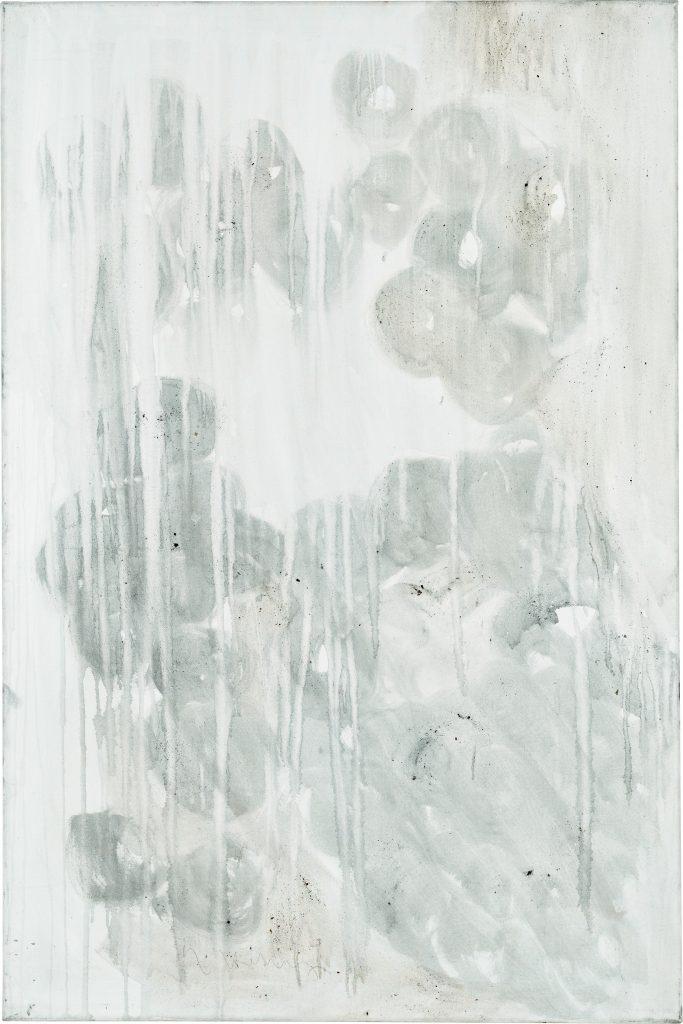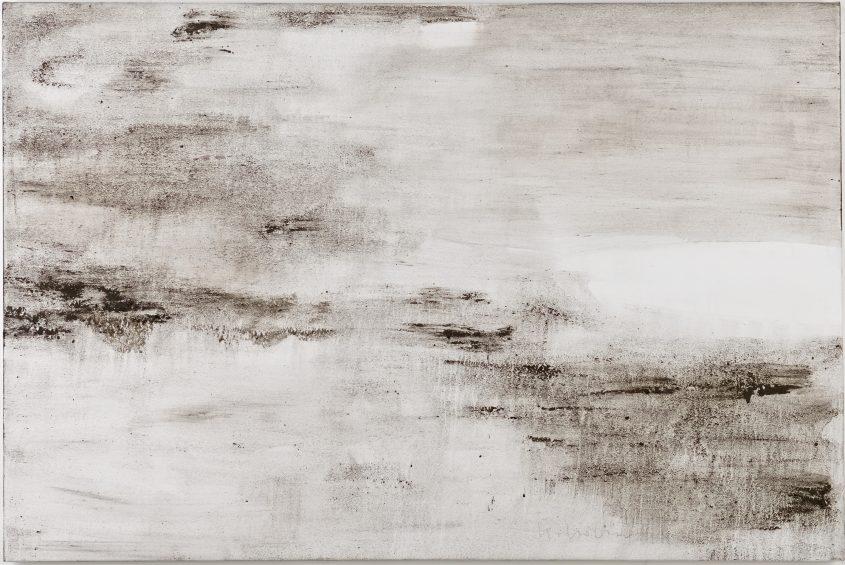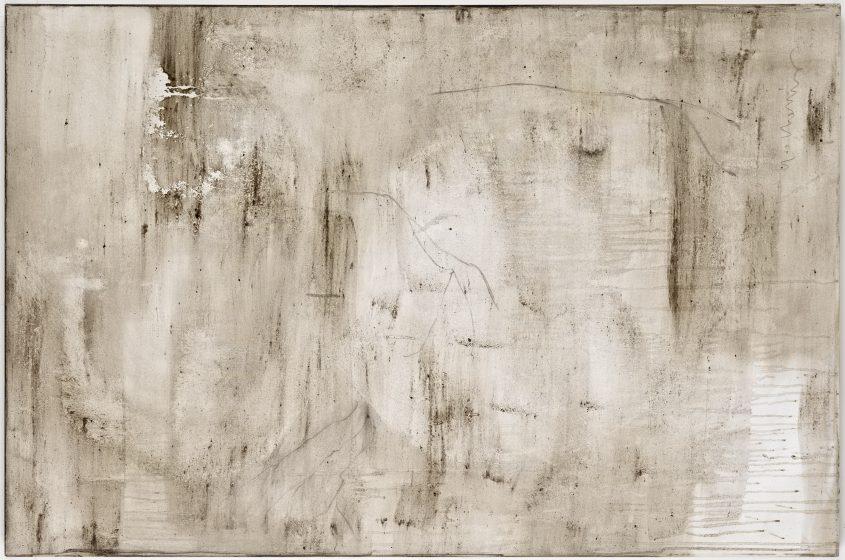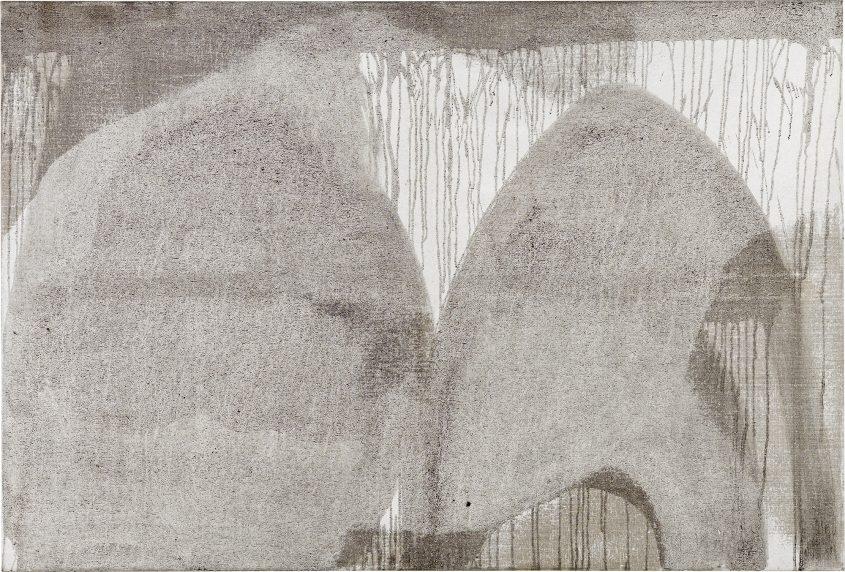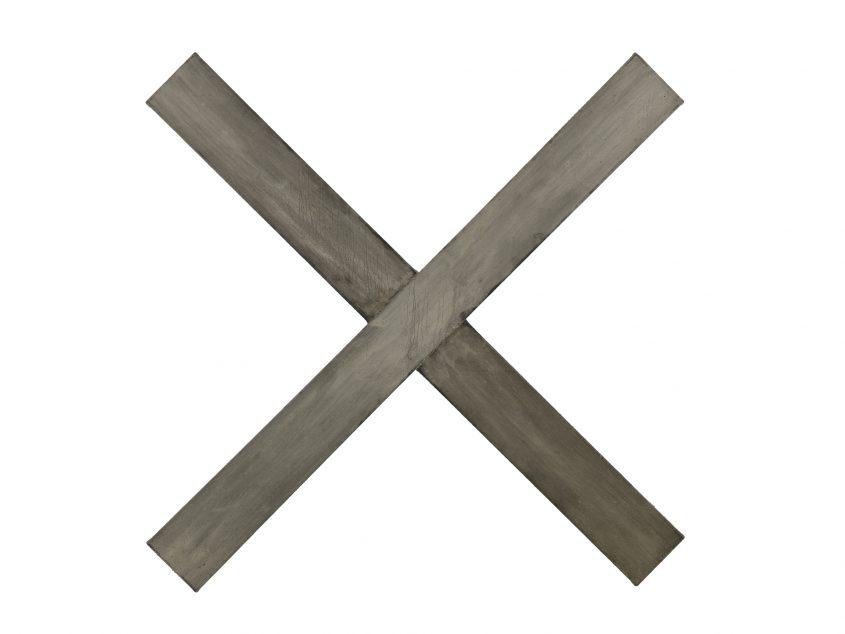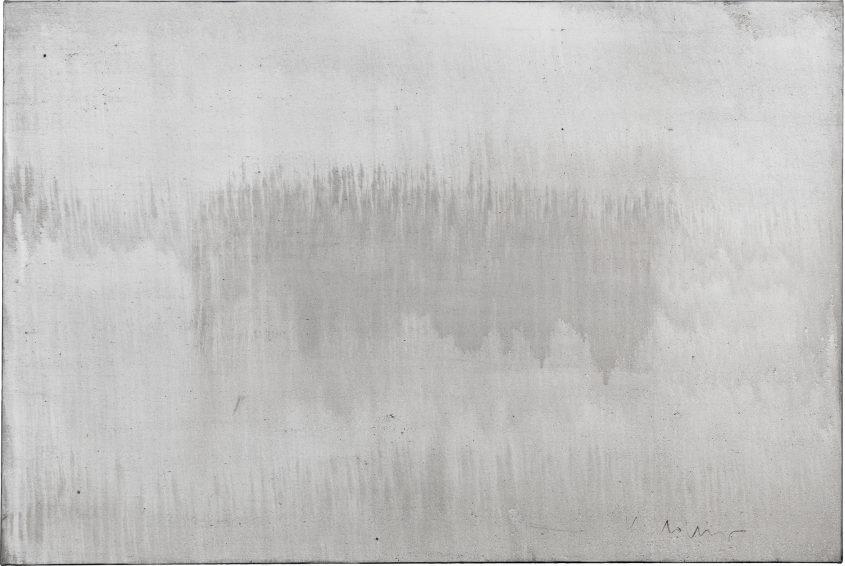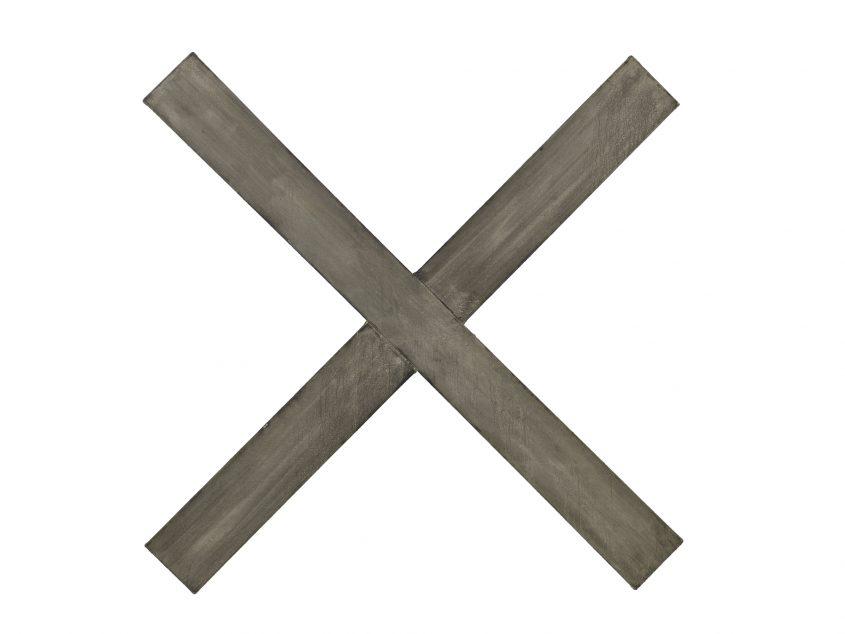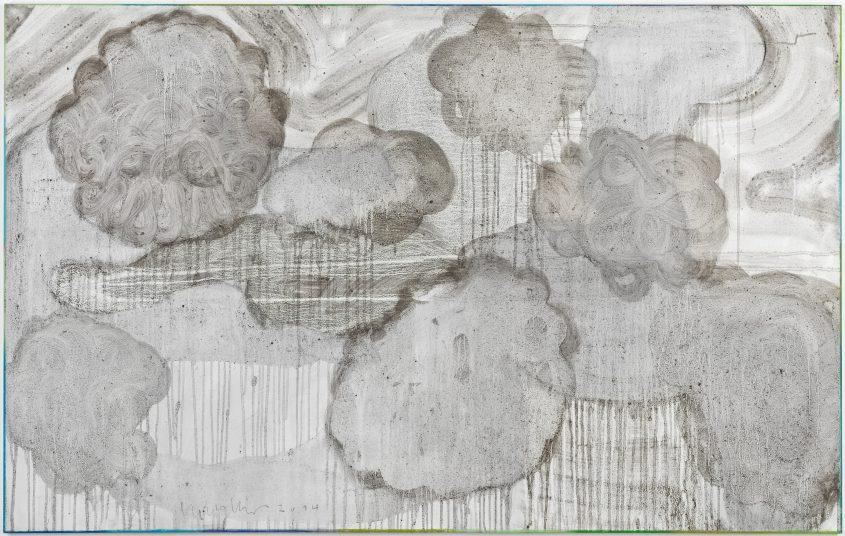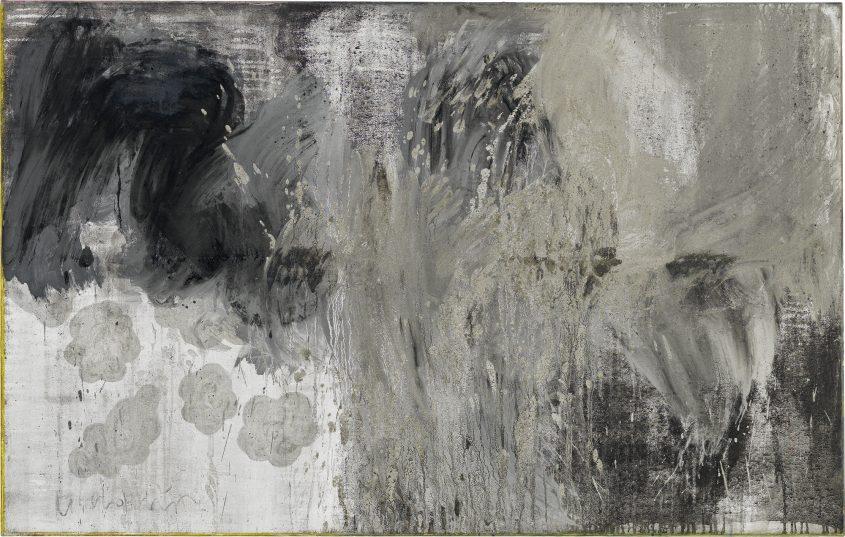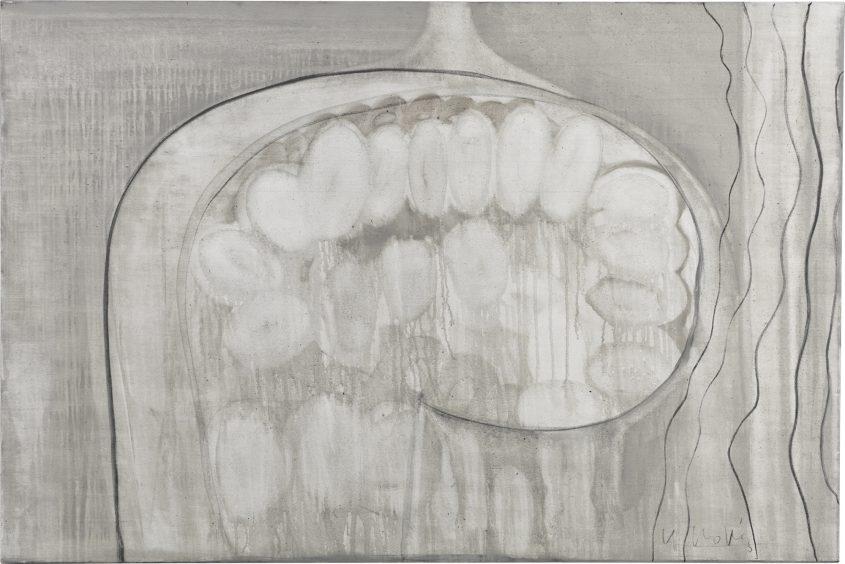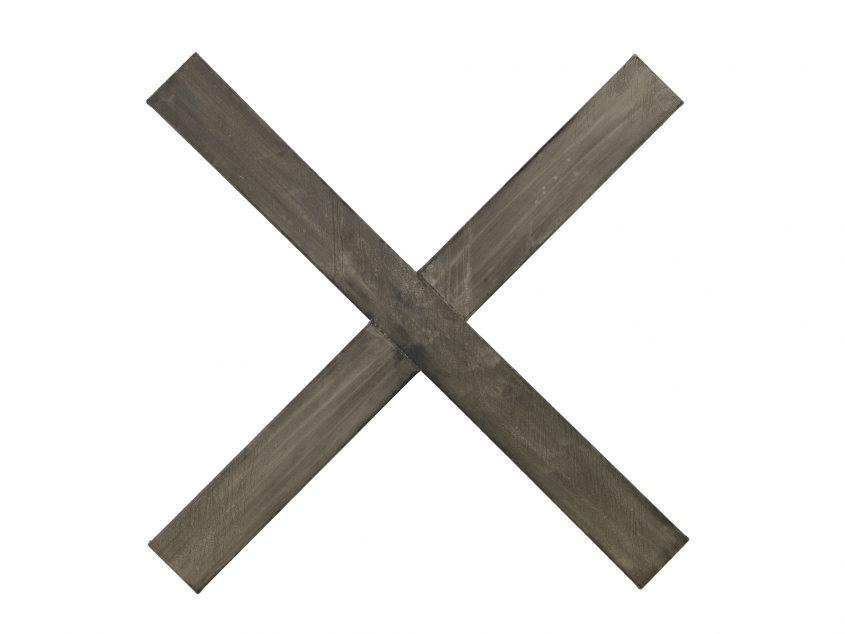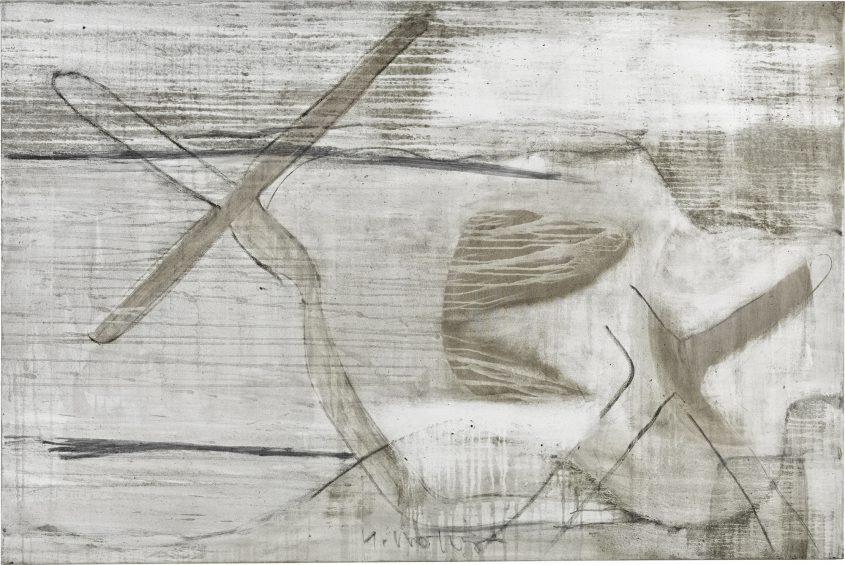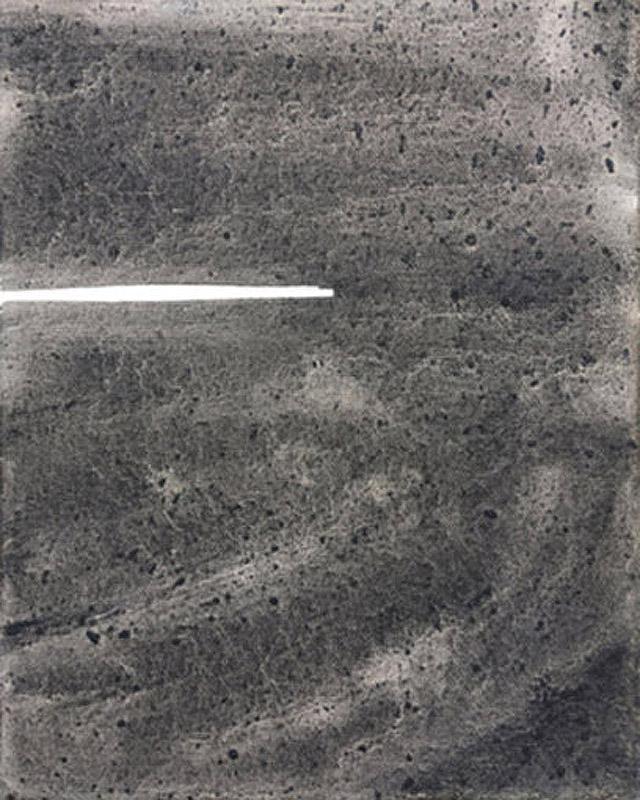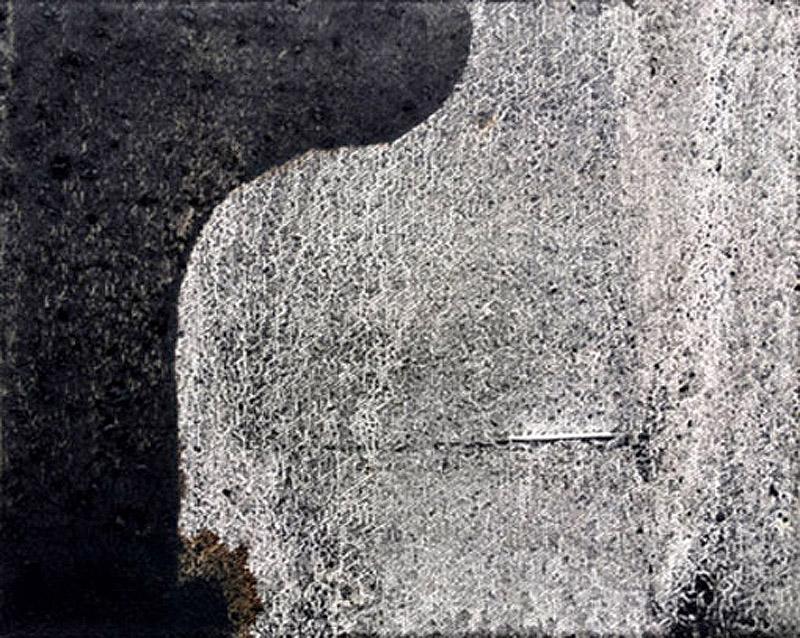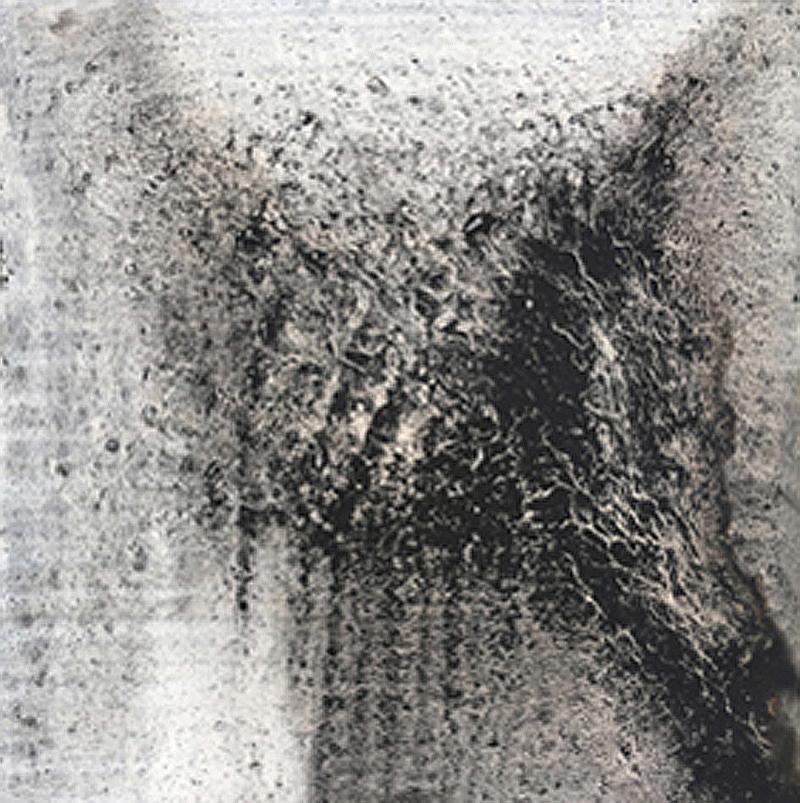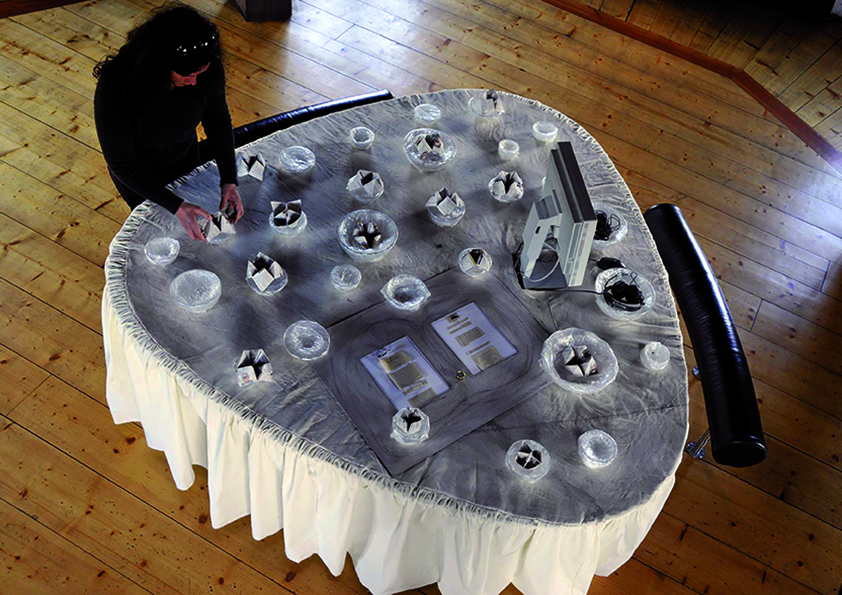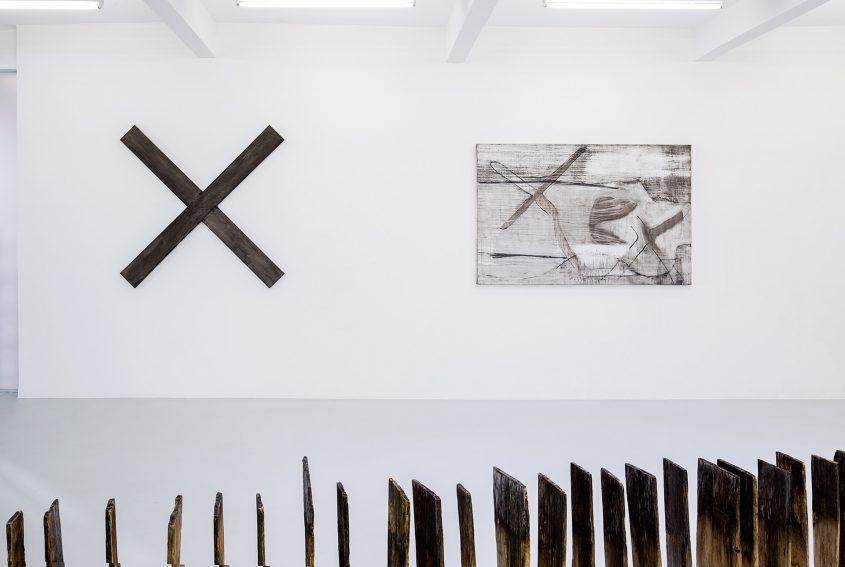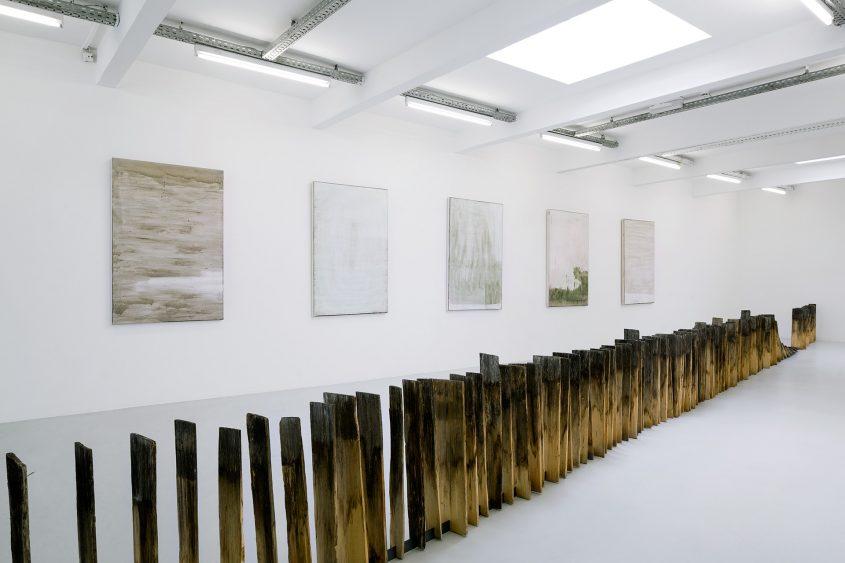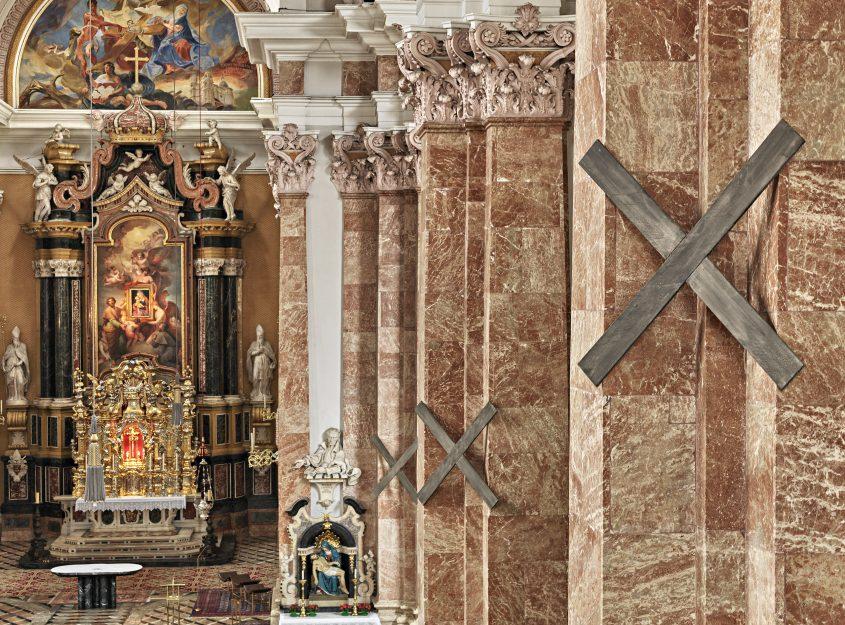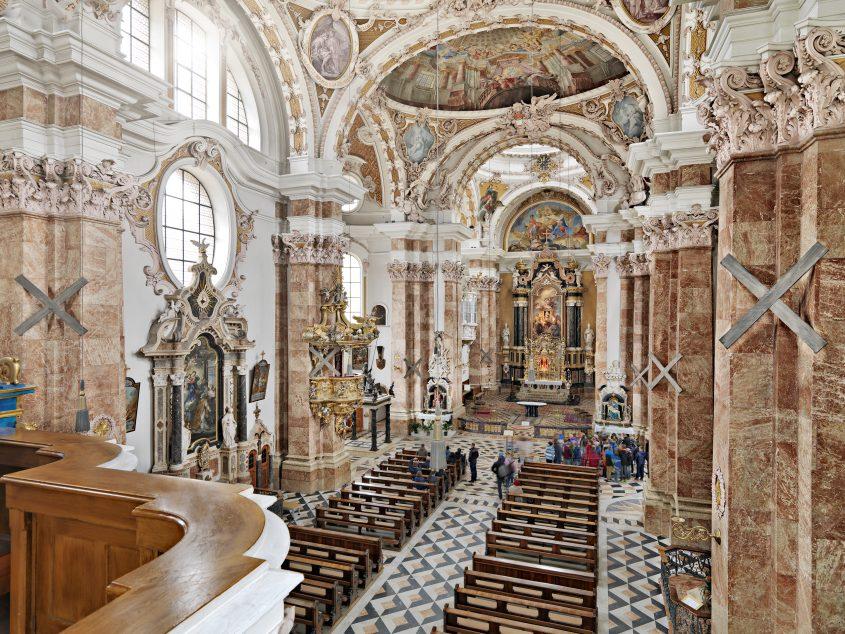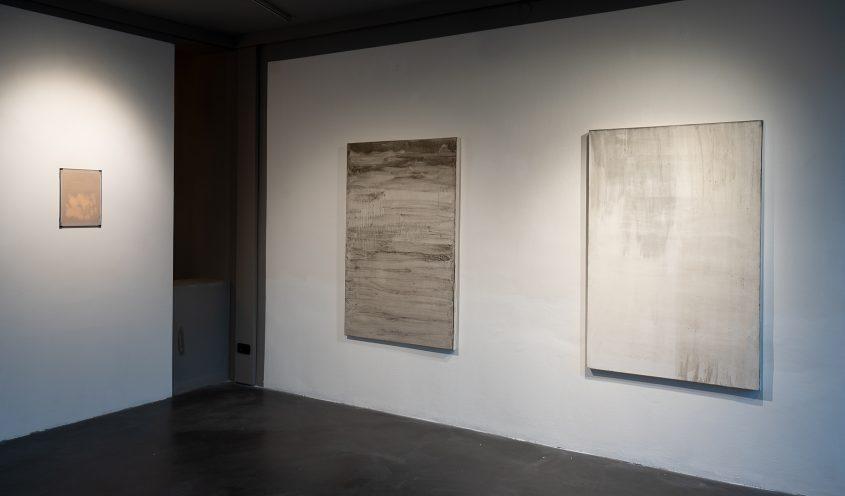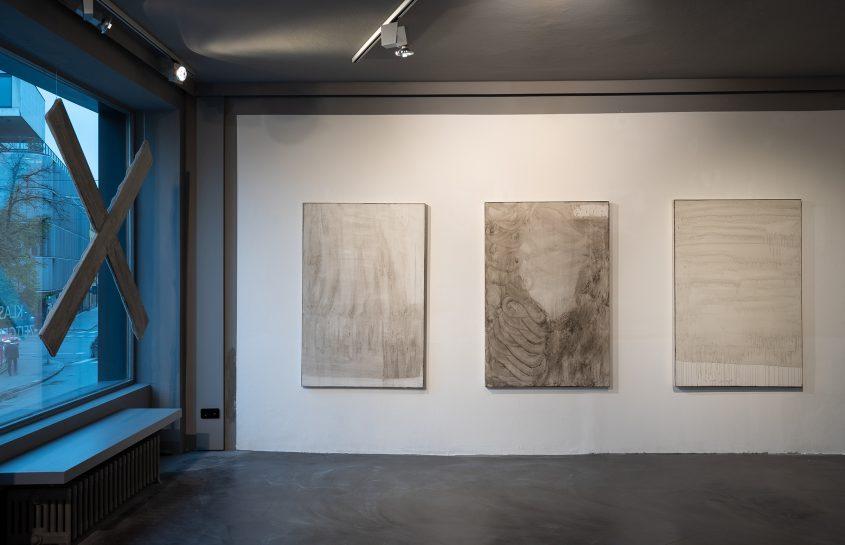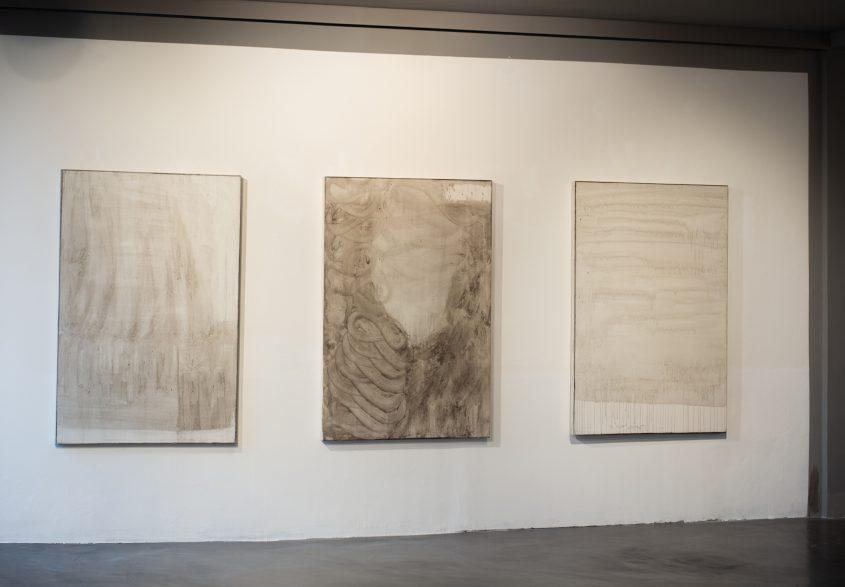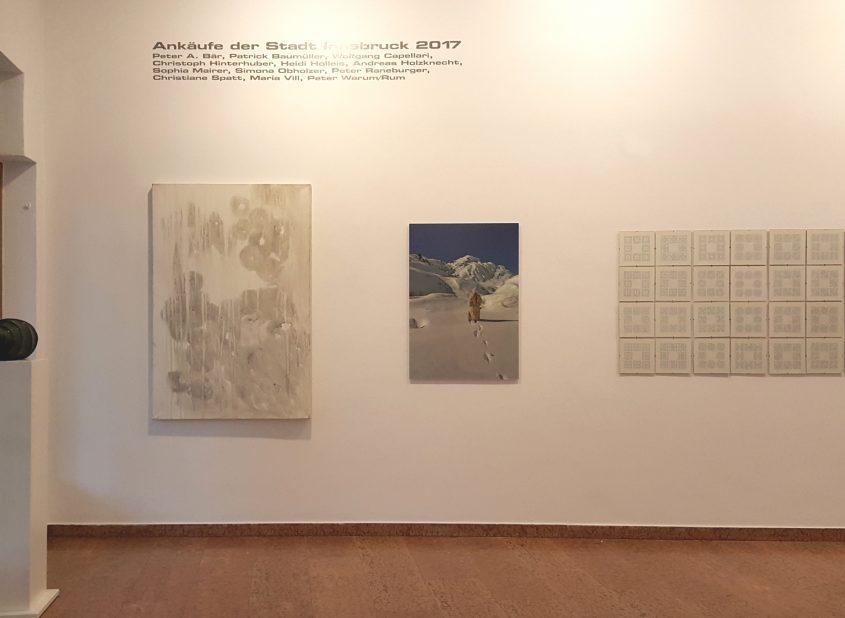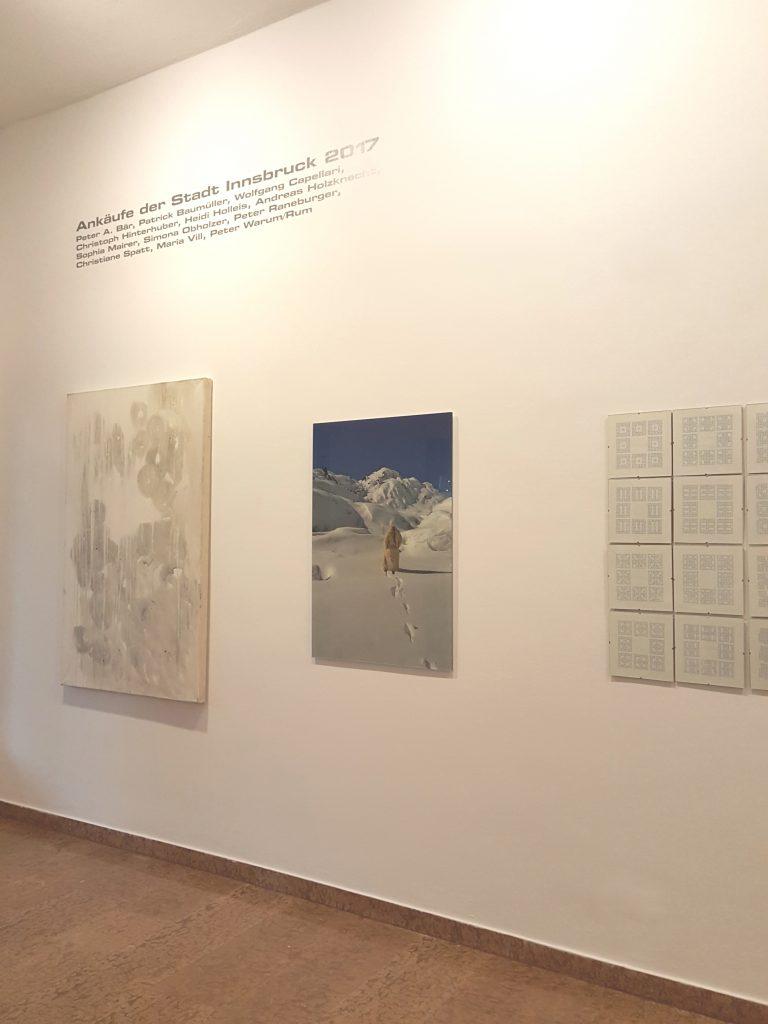Image credits: Günter Kresser // Natalie Pedevilla, Kulturamt Innsbruck // Helmut Agostini // Christian Vorhofer //
Exhibition View “set in motion”, 2016, courtesy by the artists and Kunstraum Innsbruck, Austria
ASHES TO ASHES
Heidi Holleis’ paintings from the “Ashes to Ashes” series develop their lyrical, existentialist atmosphere and movement of thought from the materiality of one of the central substances the artist uses: ashes – as well as related elements like coal, soot and smoke. Holleis’ paintings arise out of a holistic process that starts with experimental incinerations of different kinds of woods and other materials for the production of ashes and soot. The incineration signifies not only materially but also symbolically an act of dissolution and of transformation, a shift from an organic body into an inorganic, mineral basic substance. The paintings, which show abstractions dissolving into one another, in grey, beige and brown tones, partly extremely delicate, partly powerfully put on top of each other, indicate this transformation: the images are the reflection of something basically losing its material form, an expression of processes of exertion and dissolution. The subversive existential function thereof was subsumed under the term “l’informe” (“the formless”) by the French writer and philosopher Georges Bataille. At the same time, a will to regard and capture these processes as something creative manifests itself in them. The random, entropic qualities of the deliquescence and coarseness of the ash, soot and coal particles, which partially adhere to the raw canvas, merge with the traces of the artist who seems to work into the painting through the material. From this perspective, the works can be seen as metaphors for the attempt to capture the processes of dissolution and transformation, and to leave traces of oneself on them.
(From the catalogue Inventur, Jürgen Tabor, translated by Maria Magdalena Larch)
Holleis – Iconology of Ash
Tragedy
This is hardest: to make a gift of yourself
and to know that you are dispensable
to give yourself entirely and to think
that you will fade like smoke into Nothing.
23.12.1941
(Selma Meerbaum-Eisinger 1924-1942)1
Every colour of paint is the result of a more or less complicated process of production. A special aura, however, adheres to ash as a medium in an image. As the result of a process of burning, it can not be discussed without reference to fire. Fire is part of the thought and of its interpretation.2 The factor of time, the time “before”, cannot and should not be detached.3 Fire purifies and destroys simultaneously. It contains the energy, the force and potential for transformation. Until the Enlightenment it functioned as one of four elements, along with water, air, and earth.4 The fear of fire and the pleasure taken in fire inevitably tip over into the ambivalent significances of ashes. In his “Psychoanalysis of Fire” in 1937, Gaston Bachelard laid his finger on a long-festering wound in human cultural history: “what … opposes the idea of fire as a purifying force is the fact that fire leaves ashes behind”.5 Shortly before, Wolfgang Paalen (1905 – 1959) in Vienna, who stood in contact with the Parisian Surrealists, had introduced the notion of “Fumage”, a systemic scorching of the paint support, into art history.6 Between 1937 and 1939, Antonin Artaud (1896-1948) sent out letters with drawings which had been treated with fire.7 Yves Klein (1928-1962) picked up this thread with his “Fire-Anthropometries” in 1960/61. Naked women left wet imprints of their bodies on cardboard, which were subsequently treated with a flame thrower and thus left stencil-like traces. The important developments of the 20th Century should not conceal the fact that fire and smoke were frequently used to dramatic and strategic effect by visual artists in the Baroque era, at important and mostly dynastic celebrations.8 Johann Paul Schor from Innsbruck (1615-1674) was famous for staging gargantuan events in Rome,9 where he used ephemeral architecture, sculptures made of light materials and fierce fireworks displays to create coherent worlds of political symbolism, for example on the occasion of the birth of the Dauphin, at the Spanish Steps in 1662.10 The ceremonial destruction of material mirrors the elimination of existence, from which something new can arise. Religions often avail themselves of this basic reality. Christianity, and especially Catholicism, uses ashes as a paradigm of transience, a paradigm of materiality, of the nullity of the body as opposed to the spirit and the soul: dust to dust – equal to death. Artists were often called upon to create the scene for a solemn lying-in-state, the “castrum doloris”.
In a number of series – “Ashes to Ashes” is one of them – Heidi Holleis reaches into the ash-can in order to revive the physical evidence of heat, the ultimate residue of a transformation, using egg tempera on canvas. The creative Self intrudes between them. The ash, applied to the pale substrate, mutates into a confrontation of destructive substance with a positive, thematic composition over a pale background. Meticulously the artist feels her way through material substance and experiments with burning different types of wood, each of which leaves different amounts of residue. Beech ash takes on a delicate reddish-brown nuance, the ash of the spruce has a grey tone, and chestnut wood another set of grey hues. The texture and feel can be brittle, or sticky, even greasy.
What was believed dead acquires new life. Small crumbs of charcoal are generously permitted to show traces of the deed. A quality of suddenness in the brushwork wins out over the tough, uniform mass and easily finds its own particular emphases. The artist then liberates herself from these in the process of working. The breadth of subject matter can range from abstract empathies such as in the series “Acceleration”, where the brush and thereby also the forms steadily gain speed, to the near-representational series “Motherland”, in which two rounded forms evoke associations with the latin “mama”, the female breast. Feminine forms made from traces of burning amount to a melancholic and simultaneously vital squaring up with one’s own female Self. The result, however, remains an open question. The darkness of ash, in which specific details are not easily discerned, establishes a solemn tone within a concert of forms.
Holleis consciously employs structural ambiguities and multiple significances. A title such as “Poly X” signalises: there is more than one focus of interpretation. Her installation of eight “X”s in Innsbruck Cathedral during Lent in 2015 marks out several architectonic focal points within this sacred space. In the end, nobody can evade the question whether the “X” is a reference to the St. Andrew’s Cross or not, whether a cross must signify a reference to the sacred cross of Jesus, in which Christianity can allow for no leeway, or not. Inevitably, we arrive at the bald fact that two beams, laid over one another at a certain point, add up to a cross. Everything else is human projection, its religious profundity to be protected.11
Turning significances around one way or another forms the “basso continuo” of creative work. In the “Landscapes”, cloud formations travel along the lower margin of the paintings. Only the signature, and thus the Ego of their creator, appears to guarantee any certainty about “top” or “bottom” of the image. A fragile guarantee. Captions must not necessarily be placed at the lower edge. Thereby Holleis creates a precarious balance of observation, which the viewers must submit to. The play of perceptions begins to take hold. The ash remains as its medium.
The material produces a sharp contrast on the canvas itself: black on white. Zen painting, practised by monks in meditation, lives by a reduction to essentials. It consists of ink made from soot and applied to paper. The nullity of worldly appearances must also be evident in art. It is not absolutely necessary to build cultural bridges. But to divide an image support into Light and Dark, and to give it life by means of oscillating between the poles of opaquely dense and finely glazed can be seen as a basic human approach. Looking at the artistic development of Heidi Holleis, the sequential, controlled, intentional and strategic sacrifice of colour, which she obviously once used with pleasure and sensuality, strikes us as exciting and remarkable. Making a statement, in the best sense of the word. As early as 2000 she had experimented with diffusing zones of white and black on a transparent background.12 The path to a symbolic interaction has been levelled: artist – fire – ashes – canvas – movement – artist – artwork – ash.
(Markus Neuwirth, translated by Sibylle von Halem)
[1] Selma Meerbaum-Eisinger: Blütenlese. Gedichte. Edited by Markus May. Stuttgart 2013, 105.
[2] Symptomatic reference „Asche – Feuer – Holz – Papier“ in: Monika Wagner, Dietmar Rübel and Sebastian Hackenschmidt (Ed.): Lexikon des künstlerischen Materials. Werkstoffe der modernen Kunst von Abfall bis Zinn. Munich 2002, 23.
[3] Exhib. cat. Brandspuren. Das Element Feuer in der neueren Skulptur. Museum Folkwang Essen 1991; Draxler Helmut: Das brennende Bild. Eine Kulturgeschichte des Feuers in der neueren Kunst. In: Kunstforum International. vol. 87. 1987, 70–228.
[4] Gernot Böhme, Hartmut Böhme: Feuer, Wasser, Erde, Luft. Eine Kulturgeschichte der Elemente. Munich 1996.
[5] Gaston Bachelard: Psychoanalyse des Feuers. Munich–Vienna 1985, 137.
[6] Andreas Neufert: Auf Liebe und Tod. Das Leben des Surrealisten Wolfgang Paalen Berlin 2015; ibid.: Wolfgang Paalen. Im Inneren des Wals. Vienna and New York 1999; Dieter Schrage (Ed.): Wolfgang Paalen. Zwischen Surrealismus und Abstraktion. Museum Moderner Kunst Stiftung Ludwig Wien. Klagenfurt 1993.
[7] Monika Wagner: Materialvernichtung als künstlerische Schöpfung. In: Andreas Haus/ Franck Hofmann/ Änne Söll (Eds.): Material im Prozess. Strategien ästhetischer Produktivität. Berlin 2000, 109–121.
[8] Karl Möseneder: Feuerwerke. In: Reallexikon zur Deutschen Kunstgeschichte. ol. 8. Munich 1987. col. 530–607; Karl–August Wirth: Feuersäule. In: ibid., col. 422–498.
[9] Markus Neuwirth: Tirol als >Templum Salomonis<. Das Umfeld des jungen Johann Paul Schor und die Nachwirkungen in Rom. In: Christina Strunck (Ed.), Ein Regisseur des barocken Welttheaters. Johann Paul Schor und die internationale Sprache des Barock. (Römische Studien der Bibliotheca Hertziana [Max-Planck-Gesellschaft], vol. 21), Munich 2008, 31–72.
[10] Markus Neuwirth: Primogenitur. Römische Inszenierungen des Dynastischen bei Johann Paul Schor und Gianlorenzo Bernini. In: Lukas Madersbacher/ Thomas Steppan (Ed.): De re artificiosa. Festschrift für Paul von Naredi–Rainer zu seinem 60. Geburtstag. Regensburg 2010, 323–344.
[11] Markus Neuwirth: Crux. Das Symbol des Kreuzes im zeitgenössischen Diskurs. In: Exhib. cat. Crux. Das Symbol des Kreuzes/ Il simbolo della croce. Curator/ A cura di Markus Neuwirth. Hofburg Brixen 3.8.–31.10. 2013. 36–49; further: Exhib. cat. Infinito presente. Elogio della relazione. A cura di Andrea Dall’Asta S.J., Domenica Primerano, Riccarda Turrina. Museo Diocesano Tridentino 23. Juni – 10. November 2014. Triente 2014, there especially the multi-layered work Matteo Ricci, 2010, by Hidetoshi Nagasawa, 44–45.
[12] Cat. Heidi Holleis. 79 Bilder. Innsbruck (no year given)
